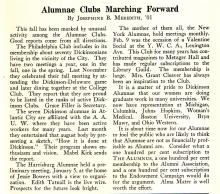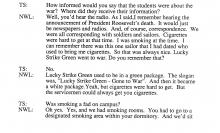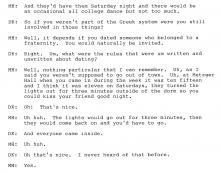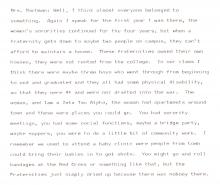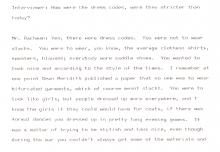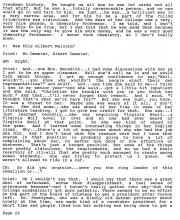Dorm Life during World War II
Winona Mensch Gray (Class of 1948) describes female dormitory life during World War II in an interview. Gray lived in Metzger Hall during her freshman and sophomore years. She was only one of two sophomores who lived in the hall. She describes Metzger Hall as an "old building with high ceilings." There was a dining room in the basement and wash basins down the hall for laundry. The dean of women lived on the second floor in an apartment. She remembers the beds being uncomfortable.



